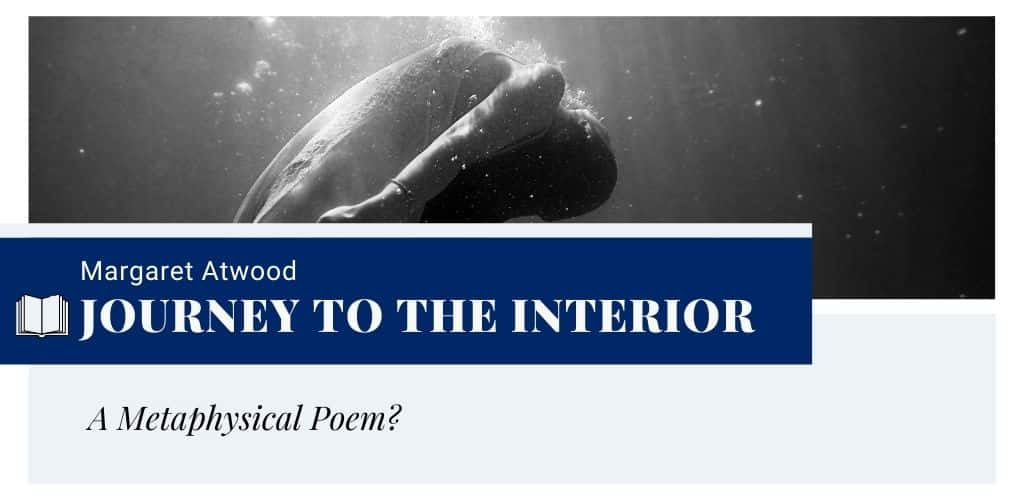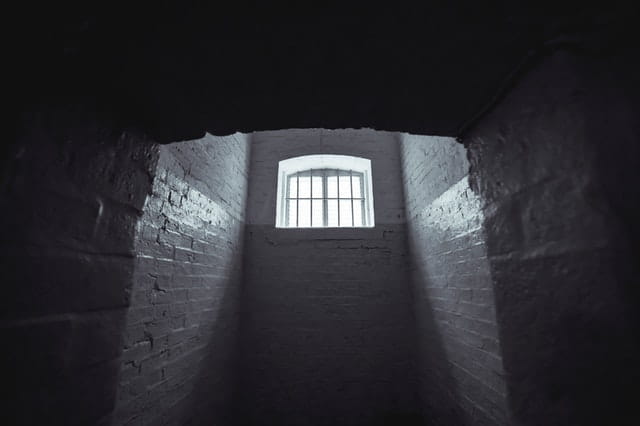Journey to the Interior by Margaret Atwood
“Journey to the Interior” is written in the form of an extended metaphor for Margaret Atwood’s entangled journey into her mental world. The mind, a complex and seemingly inaccessible region, is shaded by a wide array of thoughts and surrounded by the hilly regions of the unknown. Yes, it is too dangerous for a person to roam there without assistance. In this poem, Atwood talks about her regular journey into her mind in order to seek food for poetic thoughts or creative pursuits. Somehow she tries to keep her head during the journey or she will be lost forever.
- Read the full text of “Journey to the Interior” below:
Journey to the Interior by Margaret Atwood 1 There are similarities I notice: that the hills which the eyes make flat as a wall, welded together, open as I move to let me through; become endless as prairies; that the trees grow spindly, have their roots often in swamps; that this is a poor country; that a cliff is not known as rough except by hand, and is therefore inaccessible. Mostly that travel is not the easy going from point to point, a dotted line on a map, location plotted on a square surface but that I move surrounded by a tangle of branches, a net of air and alternate light and dark, at all times; that there are no destinations apart from this. There are differences of course: the lack of reliable charts; more important, the distraction of small details: your shoe among the brambles under the chair where it shouldn’t be; lucent white mushrooms and a paring knife on the kitchen table; a sentence crossing my path, sodden as a fallen log I’m sure I passed yesterday 2 (have I been walking in circles again?) but mostly the danger: many have been here, but only some have returned safely. A compass is useless; also trying to take directions from the movements of the sun, which are erratic; and words here are as pointless as calling in a vacant wilderness. Whatever I do I must keep my head. I know it is easier for me to lose my way forever here, than in other landscapes

Summary
“Journey to the Interior” begins with a description of a hilly region that seems flat from a distance. When the poetic persona gets closer to it she finds a passage through the hills as endless as the prairies. There is a cliff stopping the speaker from progressing further. During her travels, she has faced a lot of challenges. The location of this region is not easily accessible. An inexperienced mind can get lost due to the lack of reliable maps for guidance. Furthermore, the speaker thinks she regularly travels in a circle without discovering any further places. For this reason, it becomes difficult for her to keep her head. She can get lost in that dangerous region more easily than in other landscapes.
Structure & Form
Margaret Atwood’s poem “Journey to the Interior” consists of two parts. The first part contains the description of the metaphorical landscape. In the following part, she talks about her realization after regular roaming there. The first section has three long stanzas and the next part contains four short stanzas. There is not any specific line count in each stanza. Besides, this poem is written in the form of an interior monologue. As there is not any specific rhyme scheme or meter, it is also an example of a free-verse lyric poem.
Literary Devices & Figurative Language
Atwood uses the following literary devices in her poem “Journey to the Interior”:
- Extended Metaphor: The overall poem is an extended metaphor. Atwood’s journey to her “interior” is a reference to her metaphorical journey into her mind.
- Simile: It occurs in the following lines: “the hills/ which the eyes make flat as a wall”, “become/ endless as prairies”, “sodden as a fallen log”, etc.
- Enjambment: It occurs throughout the poem. Atwood uses this device to internally connect the lines and create suspense in the transition of lines.
- Imagery: In the first stanza, the poet uses visual imagery to depict the landscape of her mind. The second stanza contains the use of tactile imagery in “a net of air” and “light and dark”.
- Repetition: In the first stanza, there is a repetition of the word “that” at the beginning of consecutive sentences.
- Alliteration: It occurs in “wall, welded”, “point to point”, “square surface”, etc.
Themes
This poem taps on the themes of the inaccessibility and mystery of the human mind and self-discovery. Throughout the poem, Atwood details her travel to the unknown regions of her mind by using several metaphors. She describes the mind as a hilly landscape with no access point. The more she visits there the more she becomes entangled in the web. Finally, when she understands the complexities of the mind, she warns readers not to follow her path. It might cause someone to lose his or her mind. In this way, Atwood depicts how inaccessible and mysteriously beautiful the human mind is.
Another important theme of this piece is self-discovery. Atwood, being a veteran of creative pursuit, is well-versed in dealing with her mind. She knows the nooks and corners of her mind’s alleyways. If anyone needs some help, she is always there to help. Her knowledge of her own self, as well as her mind, gets reflected in this poem.
Line-by-Line Analysis & Explanation
Lines 1-12
There are similarities
I notice: that the hills
which the eyes make flat as a wall, welded
together, open as I move
to let me through; become
endless as prairies; that the trees
grow spindly, have their roots
often in swamps; that this is a poor country;
that a cliff is not known
as rough except by hand, and is
therefore inaccessible. Mostly
that travel is not the easy going
Atwood’s “Journey to the Interior” begins with a number of similarities that she can find between her mind and a physical landscape. She notices the hills that seem flat as a wall and welded together. This two-dimensional image blocks her sight to look at what is behind. It fuels her curiosity to discover what lies on the other side.
When she gets nearer to the metaphorical hills of her mind, it moves and opens a passage to let her through. She finds herself in an endless region which can be compared to the long fields of North American prairies (a type of grassland).
Here, Atwood is actually describing her own mind. Hence, she becomes a bit personal in her description. According to her, the trees (a metaphor of her creativity) that grow there are slender as their roots are often in “swamps”. These “swamps” symbolically portray a lack of creativity and negative emotions that led to the underdevelopment of her poetic thoughts.
She describes her mind as a “poor country” (it can also be a reference to her own country Canada). When she progresses further, she comes near a rough cliff that seemed plain from a distance. Due to this, she cannot go further. It portrays the inaccessibility of the human mind. The final line of this section is enjambed with the following stanza.
Lines 13-20
from point to point, a dotted
line on a map, location
plotted on a square surface
but that I move surrounded by a tangle
of branches, a net of air and alternate
light and dark, at all times;
that there are no destinations
apart from this.
She describes the difficulties along the journey. The reference to a “map” is another extended metaphor or a metaphysical conceit. Here, she depicts a physical map with dotted lines on it. In the real world, a map plotted on a square surface, guides a traveler through an unknown region. In the case of the speaker, she does not have such a map that portrays all the regions of her mind.
Therefore, she has to be bold while traveling. She has to have faith in her instincts and move through a tangle of branches. In this section, Atwood makes use of tactile imagery to convey the feeling of touch. According to her, she journeys through her mind completely using her senses. The “net of air” and the interplay of light and darkness help her in navigation.
At all times, she has to use the same process. Furthermore, she tells her audience that her description of the journey mentioned in the previous lines is the only zones she explored. Apart from that, she has not discovered any new regions. Thus she cannot tell further about it.
Lines 21-29
There are differences
of course: the lack of reliable charts;
more important, the distraction of small details:
your shoe among the brambles under the chair
where it shouldn’t be; lucent
white mushrooms and a paring knife
on the kitchen table; a sentence
crossing my path, sodden as a fallen log
I’m sure I passed yesterday
In the next stanza, Atwood talks about the differences. According to her poetic persona, the unavailability of reliable charts and most importantly the distracting small details are the sole differences between her mind and a real landscape.
In the physical world, there are maps of every explored region. They were created a long time ago and were edited and rectified with time. Therefore, those charts are somehow reliable. In the case of a mind’s map, it is next to impossible to chalk out specific routes as every person has different mental experiences. So, each map is unique.
Suddenly, the poet digresses from the topic and gives readers a glimpse of her home. She is sitting in a chair and her shoe is among the brambles. Interestingly, the “brambles” is a symbolic reference to the attachment of the poet to reality. While she sets out for her journey, these “brambles” (her family or mundane acts) hold her back.
Furthermore, she shows her kitchen where readers can find “lucent white mushrooms” and a “paring knife” on the table. These items remind her of her day-to-day activities. So, these references are also connected with the idea of “brambles”.
When she starts to think again regarding a sentence of her new poem, it takes her again to that imaginary world. She visualizes the sentence as a sodden log that she passed yesterday. Here, she describes the line or associated idea as “sodden”. She was thinking about it yesterday and gave it too much thought. So, now it seems like a saturated log.
Lines 30-34
(have l been
walking in circles again?)
but mostly the danger:
many have been here, but only
some have returned safely.
In the next part of “Journey to the Interior”, Atwood asks a rhetorical question to herself. She asks whether she has been walking in circles again after thinking about the sentence she was engrossed with yesterday.
In the following line, she talks about the danger of visiting the mind’s realm. Many have been there but only a few have managed to return safely. Here, “safely” is used in the sense of a sound mental state. It is unsafe for lots of reasons.
Lines 35-44
A compass is useless; also
trying to take directions
from the movements of the sun,
which are erratic;
and words here are as pointless
as calling in a vacant wilderness.
Whatever I do I must
keep my head. I know
it is easier for me to lose my way
forever here, than in other landscapes
Firstly, no compass works there. Even one cannot find the direction from the movement of the sun. The sun also moves erratically. None can hear a visitor as it is a “vacant wilderness”. Here, the poet highlights how dangerous it is to be there.
According to the speaker, whatever she does there, she has to always keep her head. It is easier for anyone to lose direction in the alleyways of mind. If one gets lost, there is no way out of it. The chances are higher to lose oneself than the physical landscapes. In this way, Atwood proscribes readers to be cautious while dealing with their minds. It can lead them anywhere if they are controlled by this abstract instrument of wonder.
“Journey to the Interior” as a Metaphysical Poem
The title of the poem contains a metaphysical conceit for the poet’s journey into her mind. Margaret Atwood, one of the greatest Canadian poets, compares her mind to a real landscape. She points out the similarities and disparities between them in order to give readers a holistic idea of the human mind. The poet projects herself as an experienced traveler and shares her experience with the readers. Her description is so vivid and trustworthy that readers can easily imagine a perilous landscape, closely resembling the intricacies of the mind. Due to this far-fetched comparison between two distinct ideas, it is an ideal example of metaphysical poetry. In this way, Atwood gives a form to formless, description to the indescribable.
Questions and Answers
Margaret Atwood’s “Journey to the Interior” is a poem about the poet’s journey into her mind and how she finds it difficult to withdraw herself from her mental landscape.
Atwood describes her journey by comparing its similarity and dissimilarity with a real journey. She depicts a hilly landscape that blocks her sight. When she moves closer, she finds herself amidst endless prairies. Finally, her journey is cut short due to a rough cliff.
The “interior” is a metaphorical reference to her mind. She compares her body to a house and her mind to its interior.
The first journey is that of a creative person’s pursuit into the mind for seeking food for thought. While the second journey deals with a real-life journey into a perilous landscape.
The journey is not an easy one because there is no map to guide a traveler. Alongside that, the minute details of the mind make one confused.
Many have been there in the secret alleyways of mind but only a few have managed to return. The reason is that one cannot use a compass to take directions or call someone for help. These reasons make this journey into one’s mind more dangerous.
The “journey” signifies a thoughtful speaker’s journey into her mind in order to discover herself fully.
There are a total of two stages in the poem. In the first stage, the poet describes her journey into her mind. In the following stage, she shares her experience of the journey.
In this poem, the poet metaphorically describes the landscape of her mind that closely resembles the North American (especially Canadian) hilly regions and prairies.
Explore More Margaret Atwood Poems
- “They are hostile nations”
- “Marrying the Hangman”
- “A Sad Child”
- “The animals in that country”
- “Death of a Young Son by Drowning”
External Resources
- Biography of Margaret Atwood — Learn about the poet’s biography and her works.
- About Margaret Atwood — Read more about the poet and explore some of her well-known poems.
- A Conversation with Margaret Atwood — Read the full interview of Atwood where she talks about poetry and poetic inspiration.
- Am I a bad feminist? — In this article, Atwood talks about her ideas concerning feminism and her stance as a feminist.





